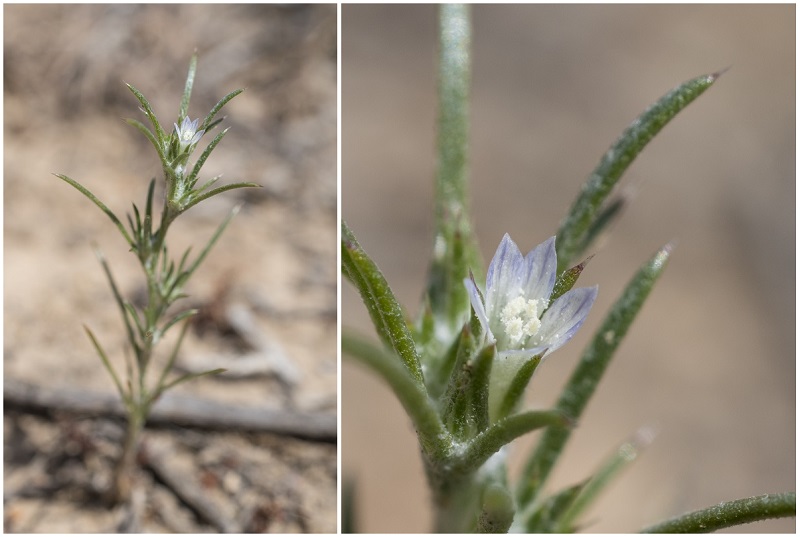
Lime Ridge eriastrum (Eriastrum ertterae)
Photo credit: Jeb Bjerke, CDFW
The California Department of Fish and Wildlife (CDFW) has initiated a status review for Lime Ridge eriastrum (Eriastrum ertterae). Lime Ridge eriastrum is a low-growing herbaceous annual plant that was first discovered in 2003. It is currently only known to occur within Lime Ridge Open Space in Walnut Creek, Contra Costa County, and has a California Rare Plant Rank of 1B.1 (rare, threatened, or endangered throughout its range).
Lime ridge eriastrum is now a candidate species under the California Endangered Species Act (CESA) and will therefore receive the same legal protection afforded to an endangered or threatened species. As of March 4, 2022, take of this species is prohibited without an appropriate permit for scientific, educational or management purposes. For more information on permitting, visit our CESA permits web page.
During the first part of this status review process, CDFW will accept any data on the species' ecology, genetics, life history, distribution, abundance, habitat, and threats, as well as comments on current and future management of the species. The call for data ends on August 12, 2022. CDFW will review the petition, evaluate the available information, and report back to the Fish and Game Commission on whether the petitioned action is warranted. For more specifics on the process and timing, please read our Eriastrum public notice letter (PDF).
If you have any questions or can provide us with any information, please email us at nativeplants@wildlife.ca.gov.